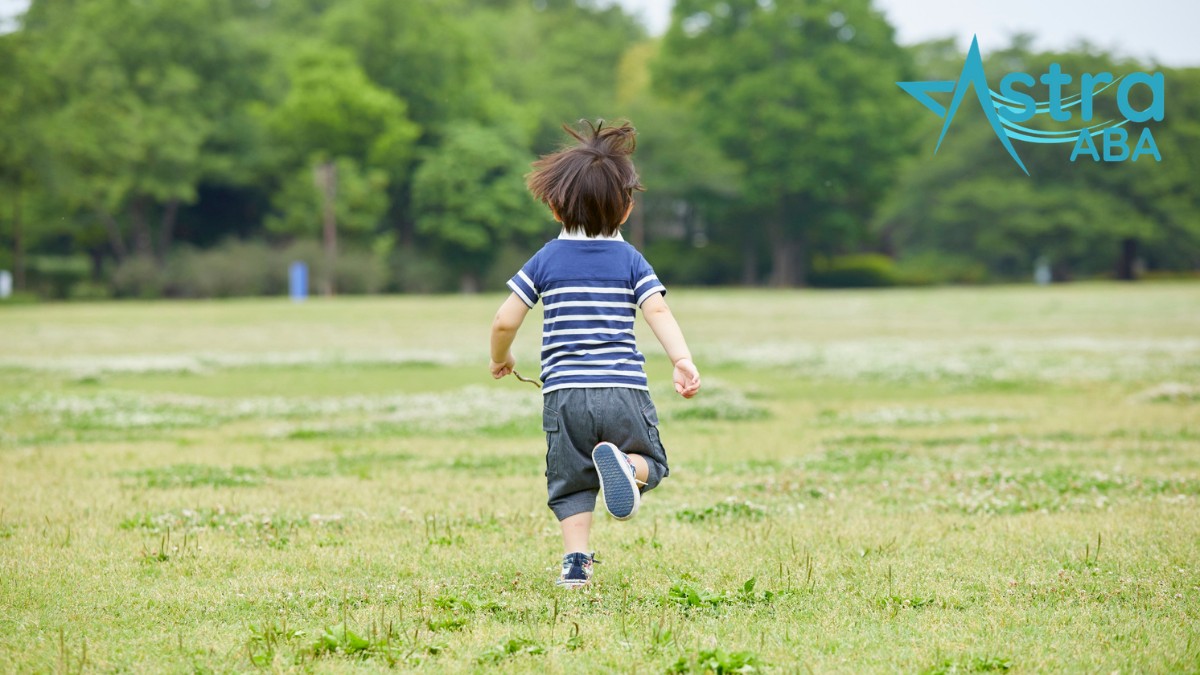How to Recognize Physical Symptoms Linked to Asperger’s Syndrome
Learn about the physical symptoms, coordination issues, and key traits of Asperger's syndrome.
July 28, 2025
Key Points:
- Physical characteristics of Asperger’s often include motor coordination differences, unusual gait or posture, and sensory sensitivities like tactile or proprioceptive issues.
- These traits can co‑occur with intense focus or repetitive behaviors, influencing daily function and quality of life.
- Recognizing physical signs early helps parents seek supportive therapies like ABA to improve coordination, self-regulation, and comfort.
While Asperger’s syndrome is considered part of the autism spectrum, it often presents with more subtle signs, particularly in motor skills and physical coordination. Research has shown that up to 87% of children with autism have some form of motor coordination difficulty. These differences may show up as clumsiness, awkward posture, or sensory-related movement challenges that impact daily life but aren’t always immediately recognized.
For many families, the physical characteristics of Asperger’s can feel confusing at first, especially if a child is bright and verbal but struggles with balance, fine motor skills, or repetitive behaviors.
These signs aren’t necessarily problematic on their own, but they can affect a child’s comfort, confidence, and social experience. In this article, we’ll walk through the common physical symptoms, coordination traits, and sensory patterns linked to Asperger’s, so parents can recognize and respond to them with effective support.
Physical Characteristics of Asperger’s: What Should Parents Know?
Many children with Asperger’s display distinct physical differences such as clumsiness, atypical posture, or sensory-motor challenges that may impact daily life. These characteristics aren’t universal, but they’re common enough that awareness can make a real difference in supporting a child’s development.
Kids may not complain about awkward gait or coordination issues, but those traits can affect social participation and self-esteem. Understanding what to look out for helps parents collaborate with therapists and educators to address these needs early.
What are Common Motor Coordination Issues in Asperger’s?
Children with Asperger’s often face challenges with fine and gross motor coordination. These differences can range from mild to significant but typically show up in everyday activities. Below are some of the most common coordination difficulties:
- Unsteady gait or awkward running: Children may walk with a stiffer posture or wide-legged gait, which can be more noticeable in crowded or uneven settings.
- Challenges with handwriting or tool use: Tasks like cutting, drawing, or writing may take more effort, resulting in messy handwriting or fatigue during schoolwork.
- Difficulty with ball skills and balance: Catching, kicking, or balancing may lag behind peers, affecting participation in sports or playground games.
- Trouble with dressing and self-care routines: Tasks like buttoning a shirt, tying shoes, or brushing teeth may take longer to master and can lead to frustration or dependence on adult help.
If left unaddressed, motor delays can limit participation in play or peer activities, making therapeutic support essential.

Why Do These Physical Traits Occur?
Physical traits in Asperger’s often stem from neurological and sensory processing differences that affect coordination, movement, and muscle control. These may include difficulties with motor planning, balance, and body awareness, which contribute to clumsiness, unusual posture, and fine motor delays.
Underlying these traits are issues like proprioceptive dysfunction (trouble sensing body position), vestibular system challenges (balance and movement), and muscle tone variations. When combined, these neurological differences can make everyday activities—such as walking smoothly, handwriting, or dressing—more difficult for children with Asperger’s.
Are Sensory Sensitivities Part of the Physical Profile?
Yes, sensory challenges often accompany the motor traits of Asperger’s. These can affect how a child moves, interacts with clothes, or tolerates physical environments. Below are some common sensitivities individuals with Asperger’s may experience:
1. Tactile Defensiveness
Children may react strongly to tags, seams, or certain fabrics, leading to discomfort and avoidance of specific clothing or touch.
2. Auditory Hypersensitivity
Loud or sudden noises can cause distress or withdrawal. Children may cover their ears or avoid busy, noisy environments altogether.
3. Sensory-Seeking Behaviors
Some children crave intense input—like jumping, swinging, or squeezing—to help regulate their nervous system and feel more grounded.
These sensitivities can influence posture, self-regulation, and willingness to engage in physical activities.

How Do Repetitive Movements Tie In?
Physical traits of Asperger’s sometimes include repetitive or self-stimulatory movements (stimming). While stimming isn’t inherently negative, it can signal underlying sensory or emotional regulation needs.
Examples include:
- Hand-flapping, finger-flicking, or rocking
- Tapping feet or bouncing knees
- Gaze fixation on spinning objects or lights
These movements often help children handle overload or self-soothe. Though socially visible, they can be redirected or replaced with more functional strategies through supportive therapy.
When Should Parents Seek Motor-Oriented Assessment?
If a child consistently appears clumsy, avoids physical games, or complains about joint or muscle discomfort, a motor evaluation may be valuable. Occupational therapists or physical therapists can identify specific delays and recommend interventions.
Signs to watch for include:
- Avoiding climbing or playground equipment
- Trips and falls more than peers
- Sensory-based distress during self-care (e.g., hair brushing, toothbrushing)
- Difficulty with dressing, fastening, or toileting skills
Early referral can prevent frustration and support confidence in physical activities.
What Can Therapy Do for These Physical Traits?
Addressing the physical characteristics of Asperger’s often involves a combination of therapeutic approaches. These interventions can help children integrate movement, sensory, and self-regulation skills more naturally.
Key therapeutic options include:
1. Occupational Therapy (OT)
Occupational therapy builds skills in daily living, fine motor coordination, and sensory integration, supporting independence and reducing frustration in everyday routines.
2. Physical Therapy (PT)
Physical therapy focuses on large muscle groups, helping children improve balance, posture, coordination, and endurance through movement-based activities.
3. Vestibular & Proprioceptive Activities
These activities help regulate the sensory system using movement and pressure, improving body awareness, balance, and the ability to stay calm and focused.
4. Motor Planning Exercises
Motor planning exercises break complex tasks into steps, teaching children how to move their bodies purposefully and with greater coordination and control.
These therapies can significantly improve engagement, comfort, and skill development in everyday settings.
How Does ABA Support Physical and Sensory Needs?
While Applied Behavior Analysis (ABA) is often associated with social or communication goals, it can also support motor and sensory-related challenges. ABA focuses on behavior patterns, reinforcement, and gradual skill-building, making it a flexible option.
ABA strategies in this context may include:
1. Reinforcing Effortful Motor Tasks
ABA therapists use positive reinforcement to encourage participation in challenging physical activities like writing, balance, or fine motor tasks.
2. Teaching Alternative Self-Regulation Behaviors
Therapists guide children to replace disruptive stimming with calming strategies such as deep pressure, squeezing, or fidget use.
3. Creating Structured Movement Breaks
Built-in movement routines help regulate energy and sensory input, improving focus and reducing physical discomfort throughout the day.
4. Using Visual Prompts and Task Analyses
ABA breaks complex motor actions into step-by-step visuals, making it easier for children to follow and learn new physical skills.
When supervised by therapists who understand sensory-motor issues, ABA can strengthen physical skills in real-world contexts.
What Should Parents Do Next?
Understanding the physical characteristics of Asperger’s is a first step—acting on that knowledge is next. Parents can:
- Request a motor and sensory evaluation through school or pediatric referrals
- Collaborate with therapists to design individualized plans
- Observe and track physical and sensory reactions during activities
- Share information with teachers so classroom needs can be accommodated
These steps ensure that physical challenges don’t overshadow a child’s strength and potential.
Empower Your Child With ABA Therapy
If you've noticed motor delays, sensory sensitivities, or atypical movement patterns in your child, ABA therapy paired with occupational or physical therapy can offer comprehensive support. ABA can help embed physical goals into daily routines, reinforce milestones, and teach coping strategies for sensory overload.
Astra ABA offers personalized ABA therapy in Kansas, Indiana, and North Carolina, working with families to support physical development, motor coordination, and sensory regulation, alongside social and communication growth.
Reach out to us to learn how ABA therapy can help your child move more confidently, play more joyfully, and engage more fully in daily life.
Related Content
Liked this article? Check out these related posts to learn even more!






Ready to start your journey with ASTRA ABA?
Contact us today for a consultation and let us be a part of your child's path to success.
Get In Touch







.png)





